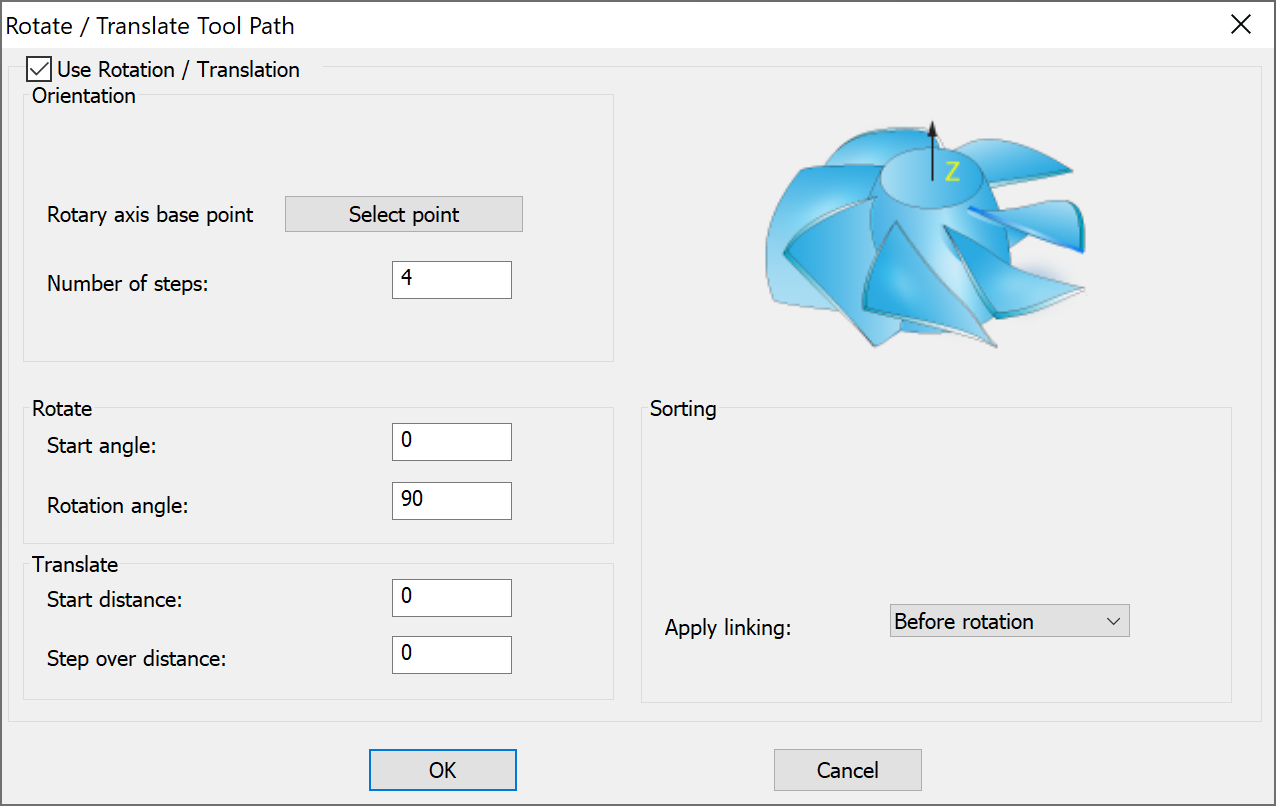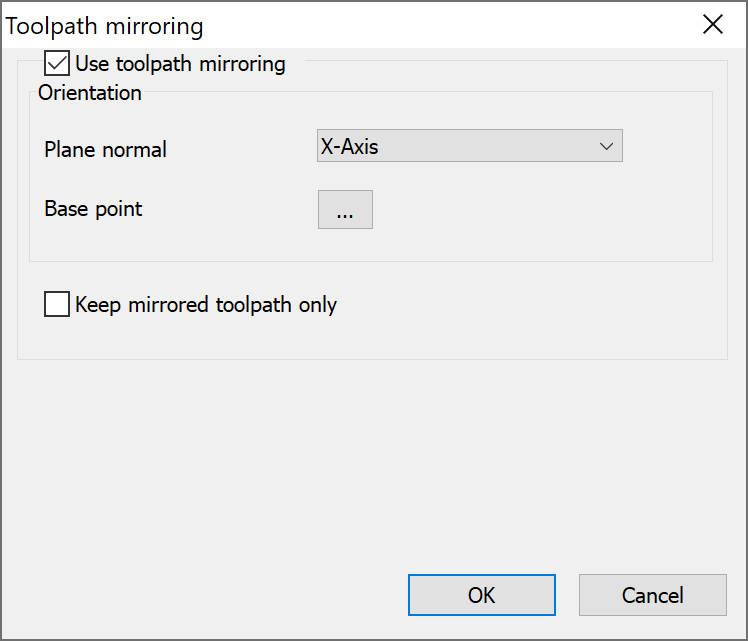Transformation
For Turbo 3D HSR strategies, the Transformation page enables you to define the Rotate & Translate and Mirror parameters.
Rotate&Translate
The Rotating strategy is useful for parts with multiple identical elements arranged in a circular pattern. Instead of adding a separate operation and defining the same parameters for each of these patterns, you can have the same tool path repeated a given number of times by rotation around a specific axis.
The Rotate/Translate Tool Path dialog box enables you to define the parameters of rotation.

Orientation
Rotary axis base point
This option enables you to define the position of the rotation axis. When you click the Select point button, the Select point dialog box is displayed with the coordinates of the point you pick on the model.
Number of steps
This parameter enables you to define the number of instances of the circular pattern. In other words, it defines how many times the initial tool path will be repeated around the rotation axis.
Rotate
Start angle
This parameter enables you to define the rotation angle for the first tool path instance of the circular pattern.
Rotation angle
This parameter enables you to define the angle between two adjacent instances of the circular pattern.
Translate
This section contains two parameters that enable you to transform a 5-axis tool path.
Start distance
This parameter defines the distance between the initial tool path instance and the next one in the transformed pattern.
Step over distance
This parameter defines the distance between two adjacent tool path instances of the transformed pattern.
These distances are measured along the transformation axis defined in the Rotary axis around list.
Apply stock
This option enables you to trim the tool path with the stock model either before or after the rotation.
Before rotation
With this option, SolidCAM generates the initial tool path, trims it with the stock model and then performs the rotation. In this case all the tool path instances are trimmed with the same stock.
After rotation
With this option, SolidCAM performs trimming after the tool path rotation. In this case the stock used for the trimming is updated after each rotation instance.
|
The Apply stock option is available only for THSR Rest strategy. |
Apply linking
This option enables you to link the tool path either before or after the rotation.
Before rotation
With this option, SolidCAM generates the initial tool path, links it and then performs the rotation. In this case the link movements in all the rotated instances of the tool path are the same.
After rotation
With this option, SolidCAM applies linking after the tool path rotation. It is recommended to use this option with the collision control activated to avoid possible collisions in the link movements.
|
The Apply linking option is available only when the Before rotation option is used for Apply stock. When Apply stock is set to After rotation, the Apply linking option is disabled and the After rotation option is used. |
Mirror
The Mirror option enables you to create a mirror image of the tool path by reflecting it symmetrically around any selected axis and base point.
Click Mirror button to display the Toolpath mirroring dialog box.

Select Use toolpath mirroring check box to enable the options of Axis Direction and Base point.
Orientation
The mirror plane on which you can mirror the tool path is defined using an axis and a base point.
Plane
The option of Plane has the options of X-axis, Y-axis, and User-defined.
Base point
Click ![]() to select
the base point of the plane.
to select
the base point of the plane.
Keep mirrored toolpath only
Selecting this check box enables you to display only the mirrored tool path. If this check box is not selected, the original and mirrored both tool paths are displayed.